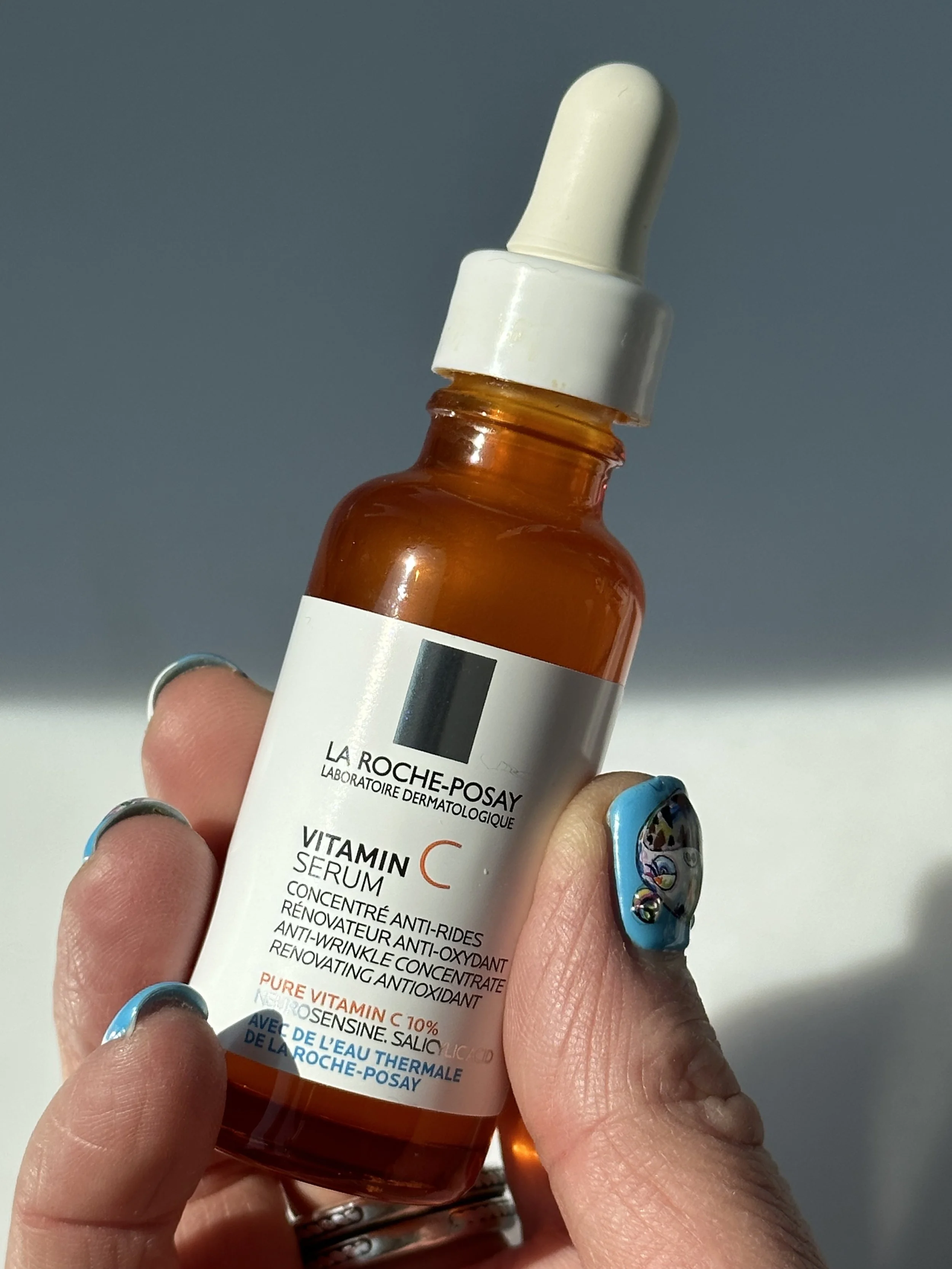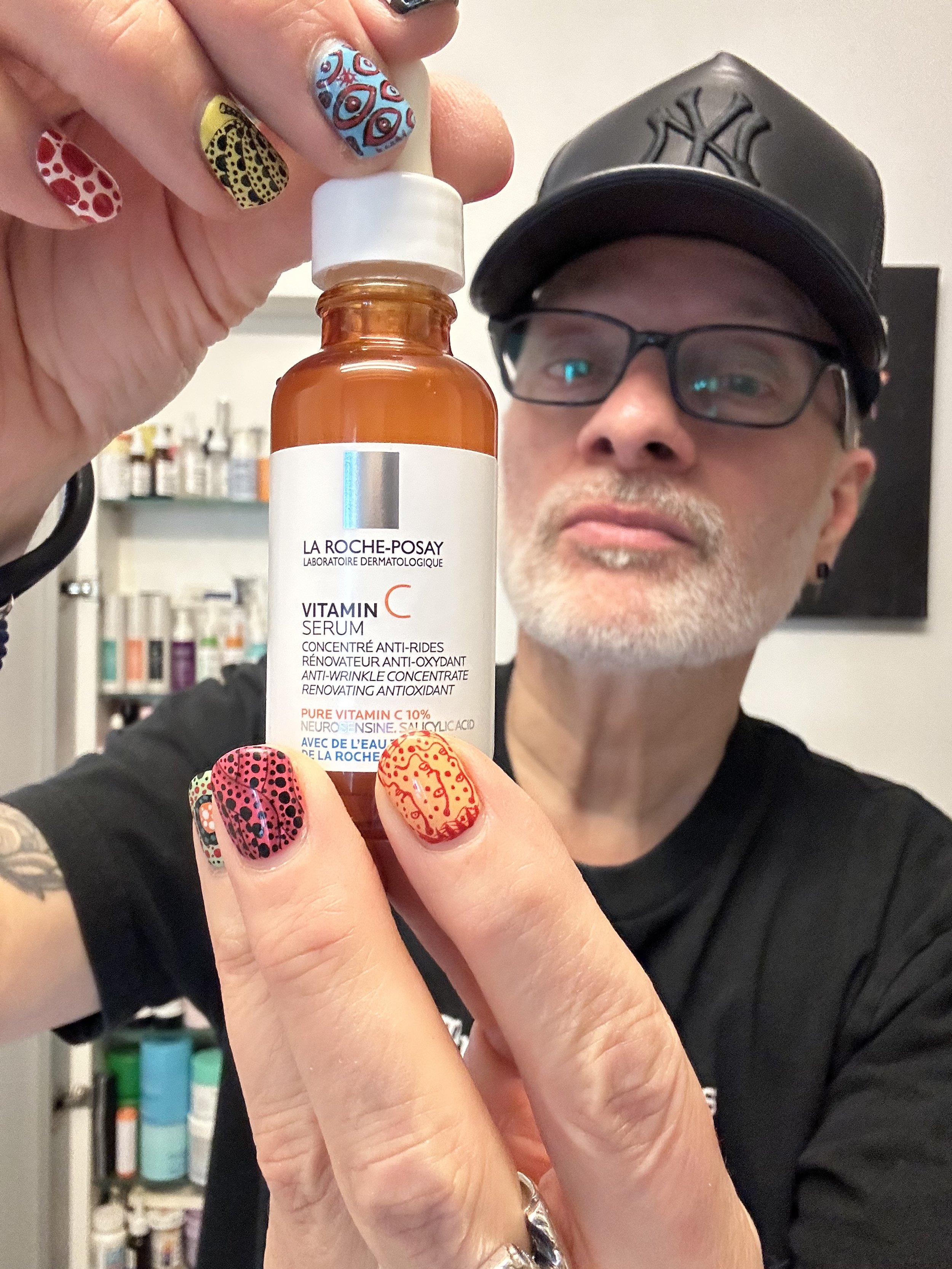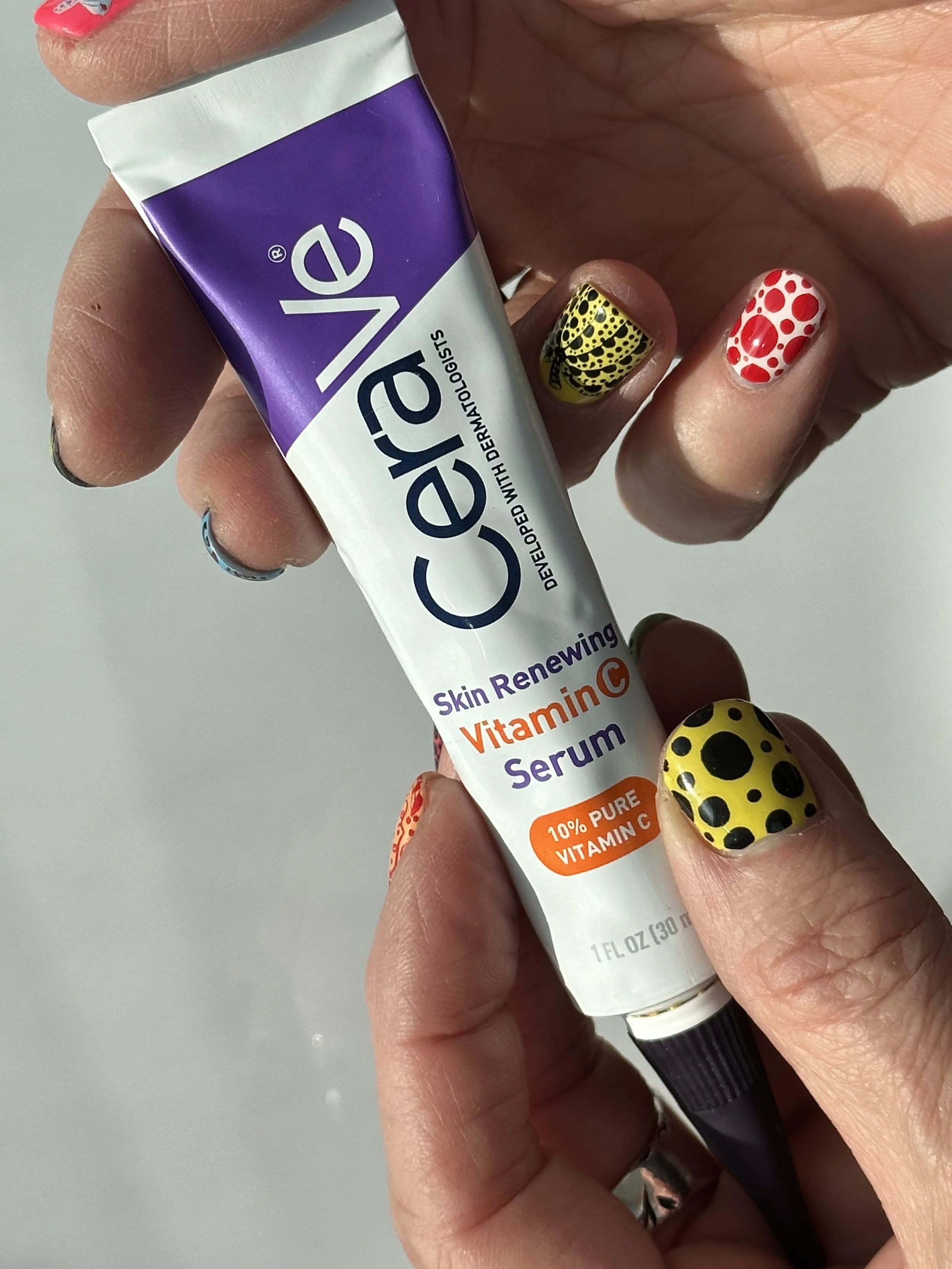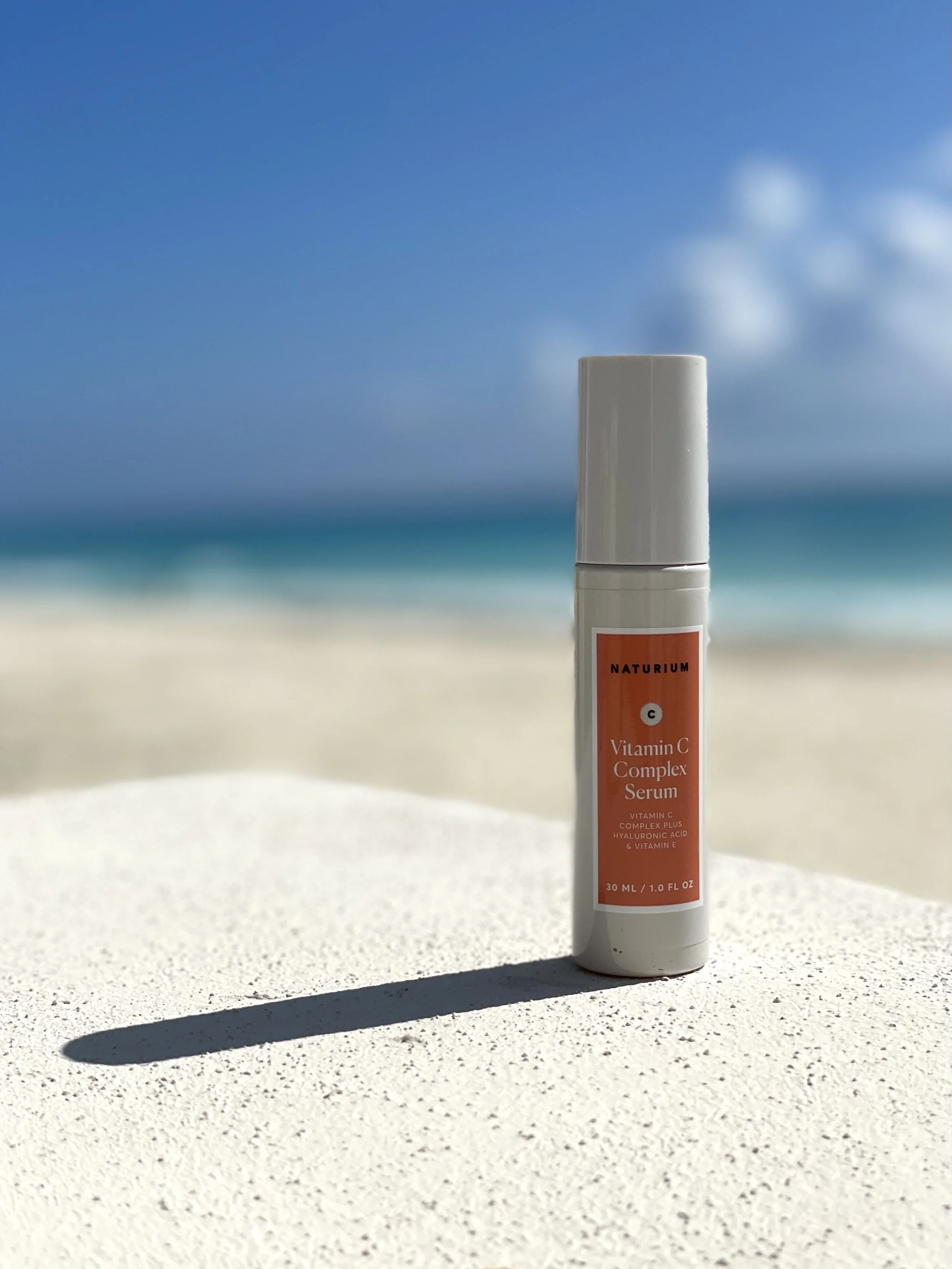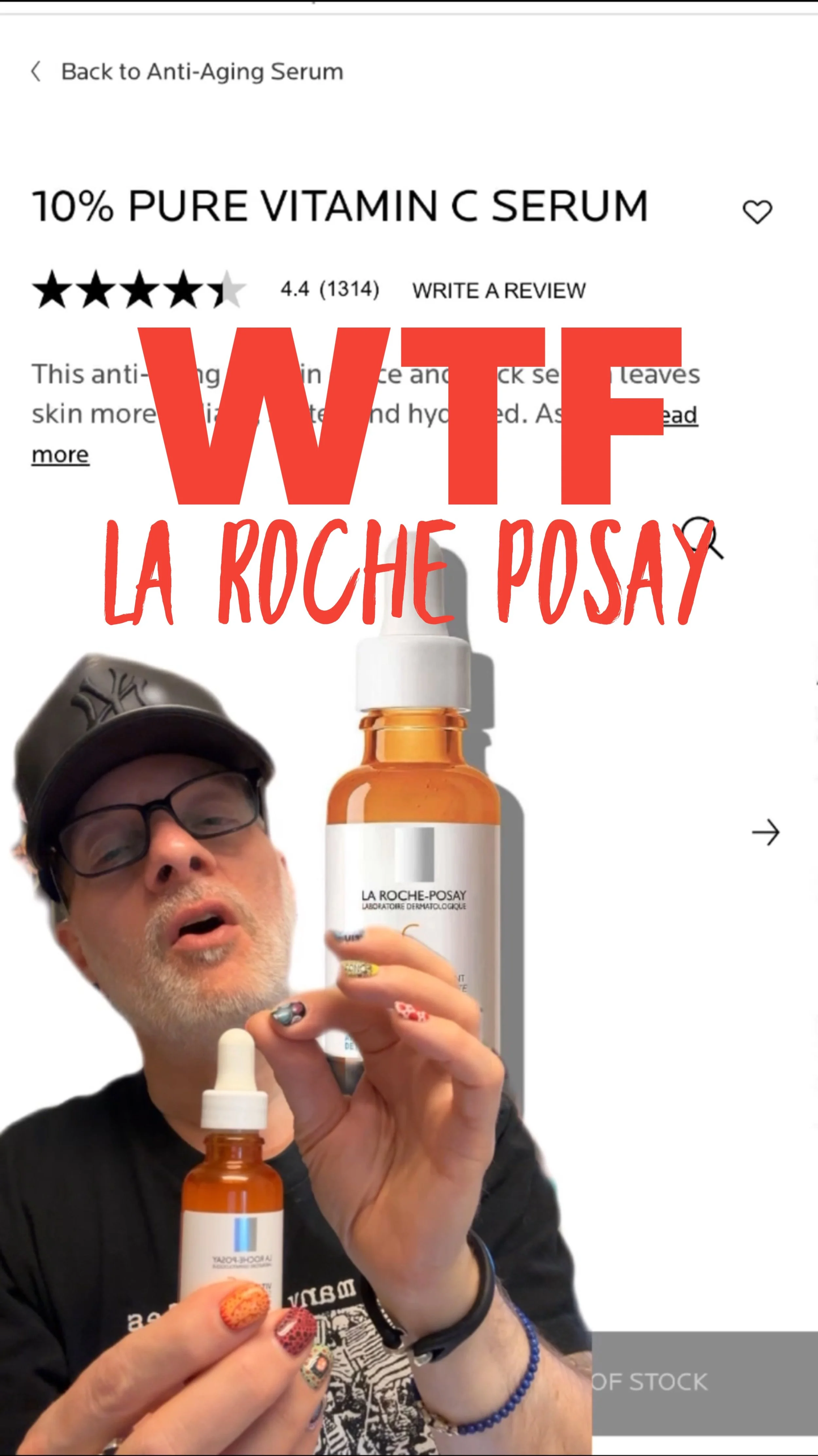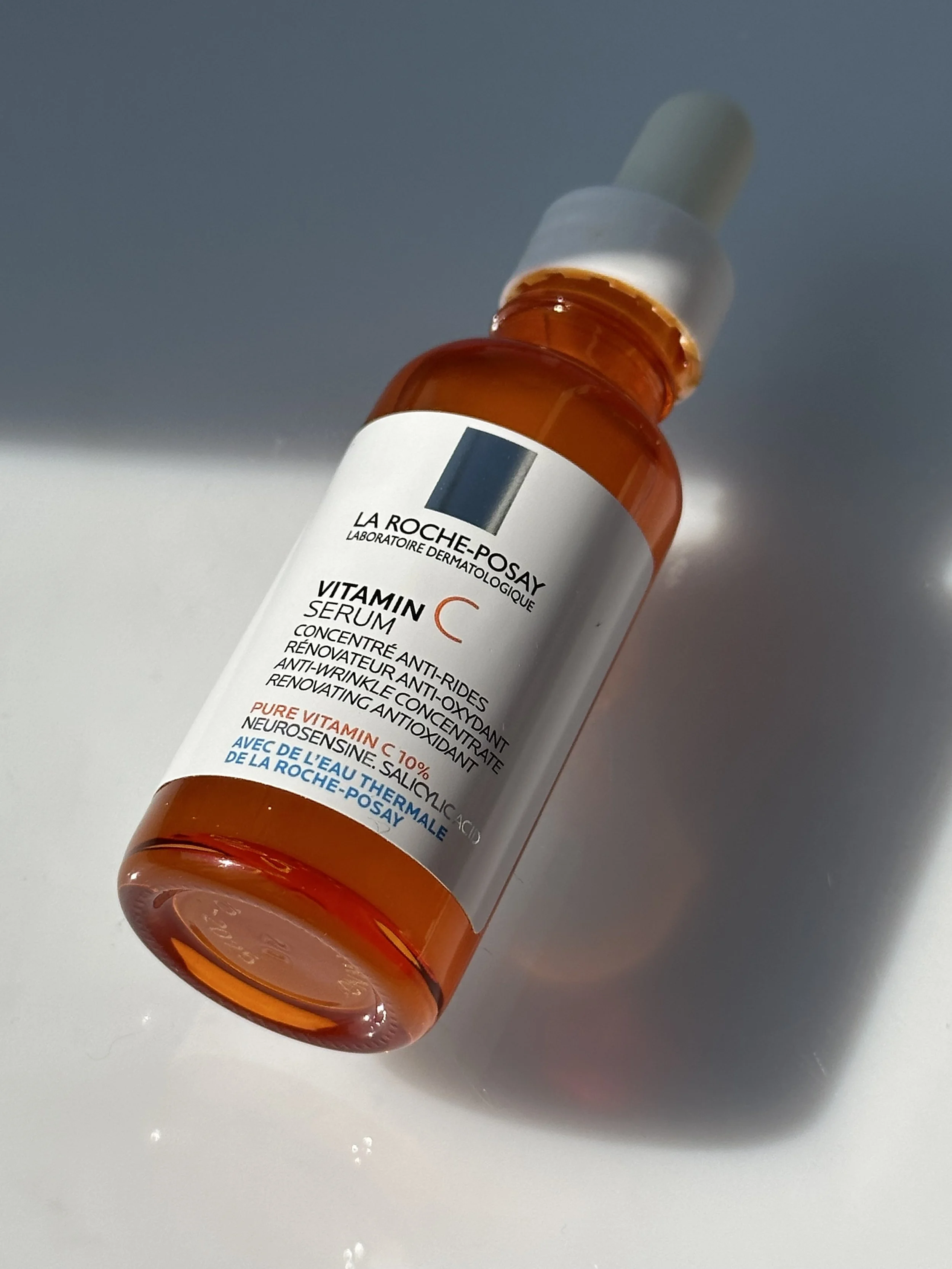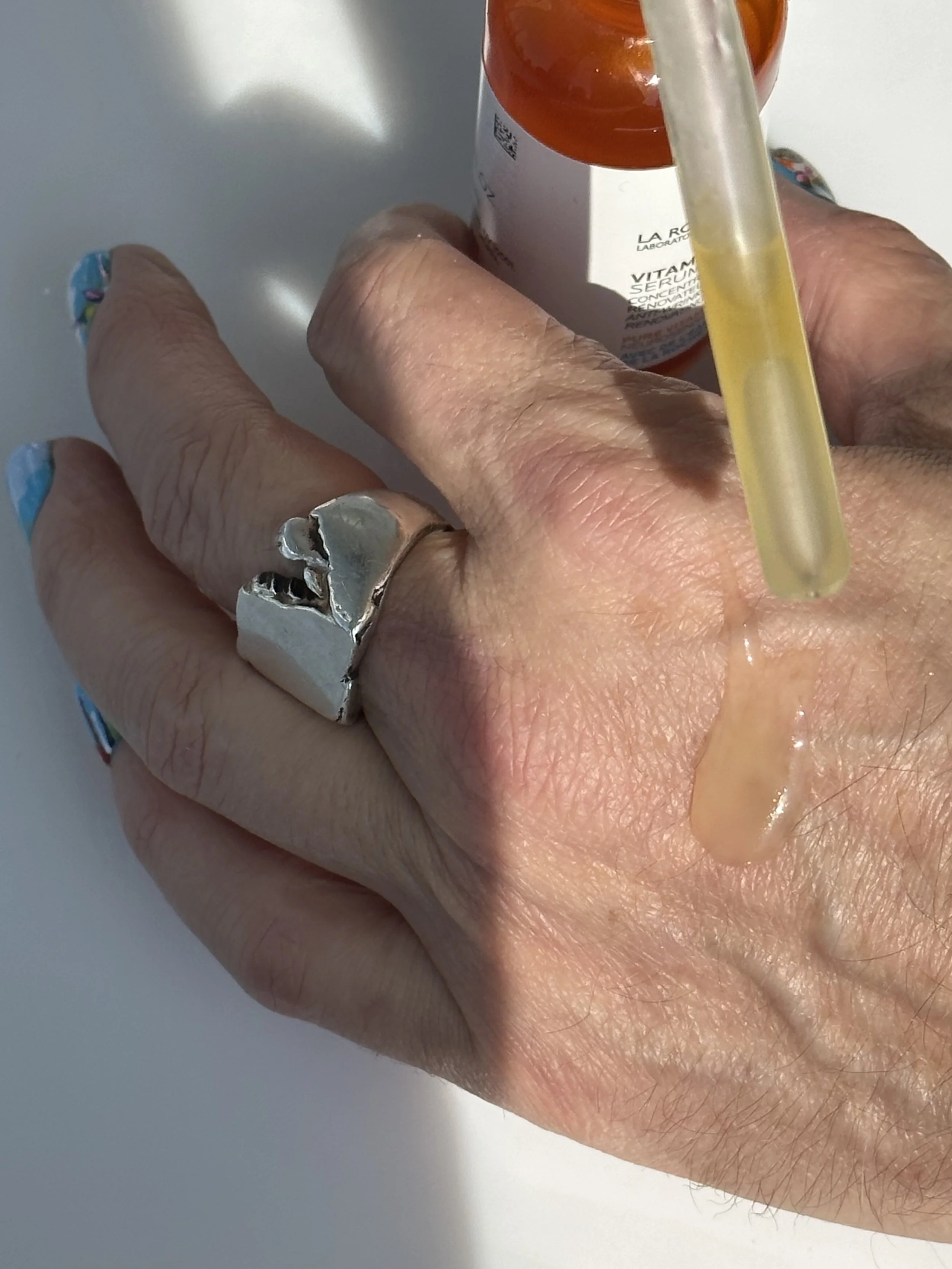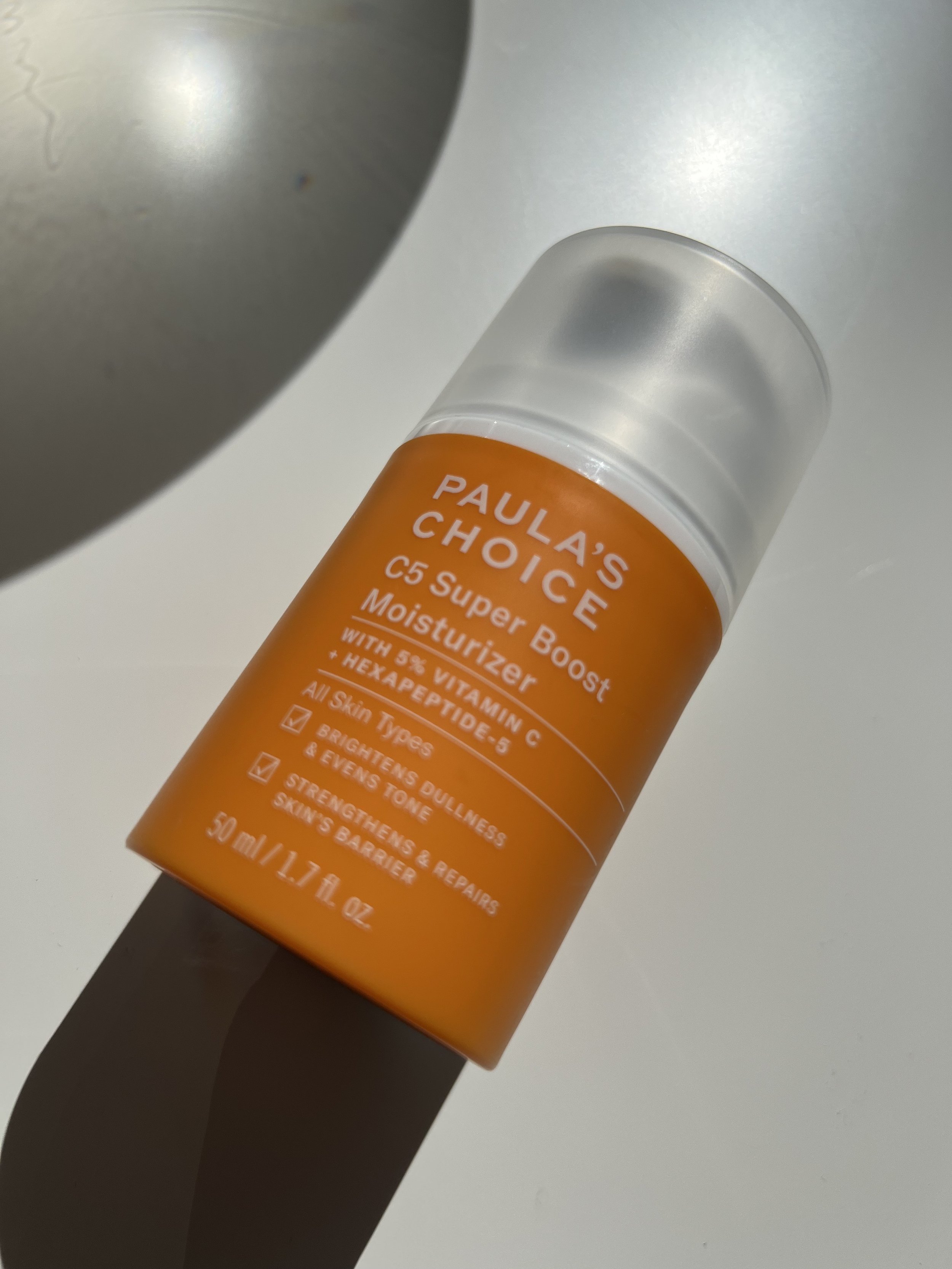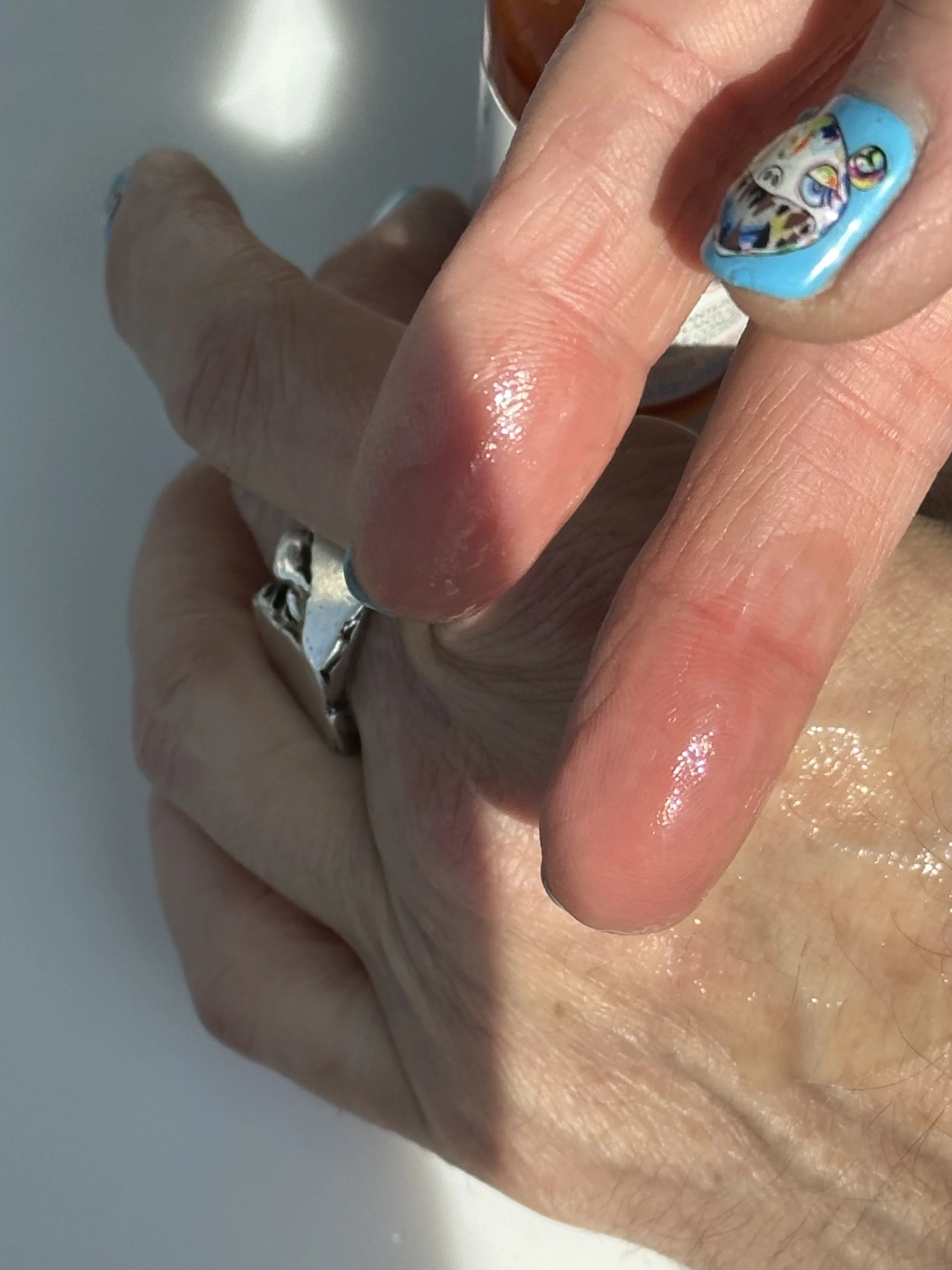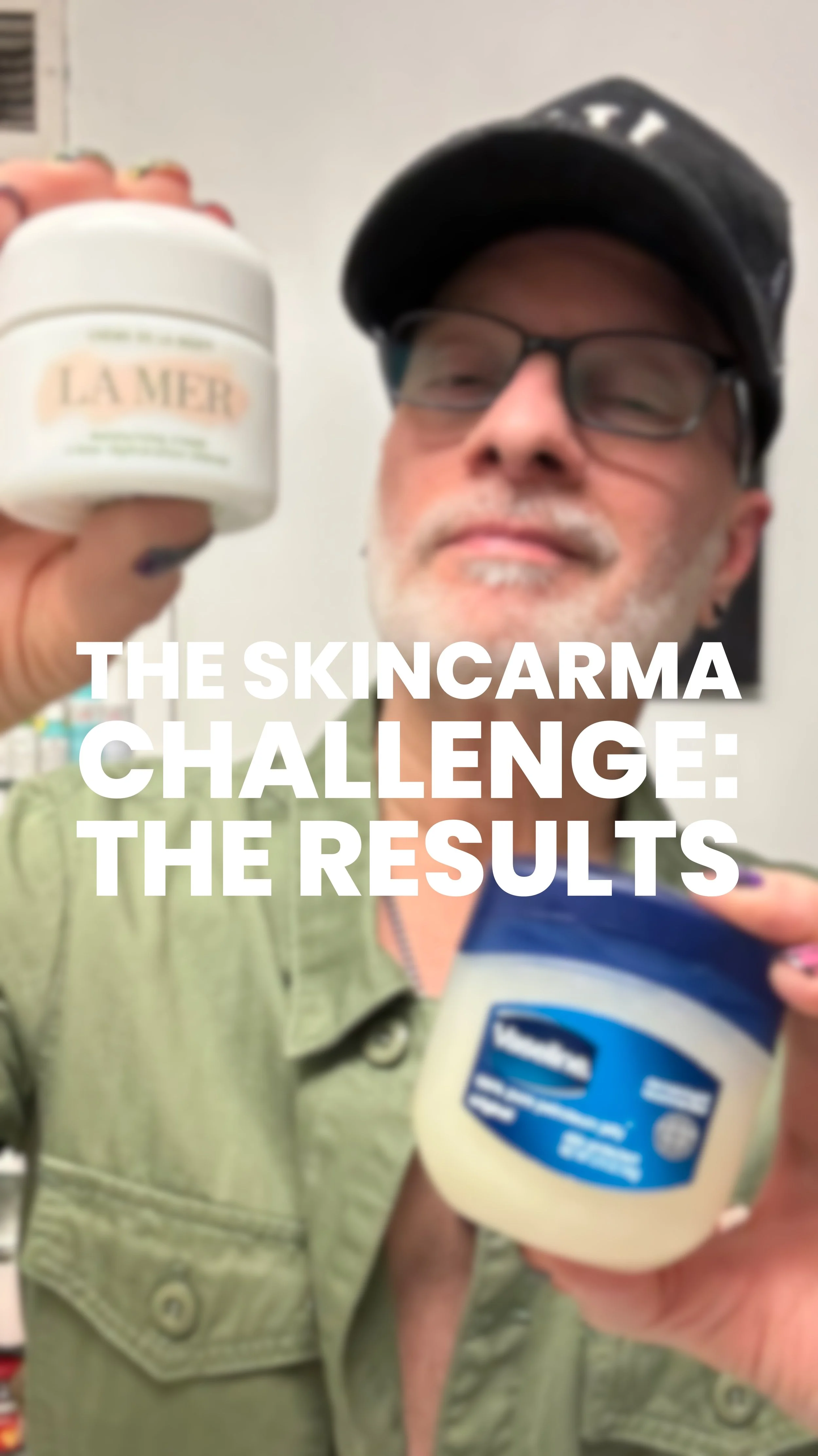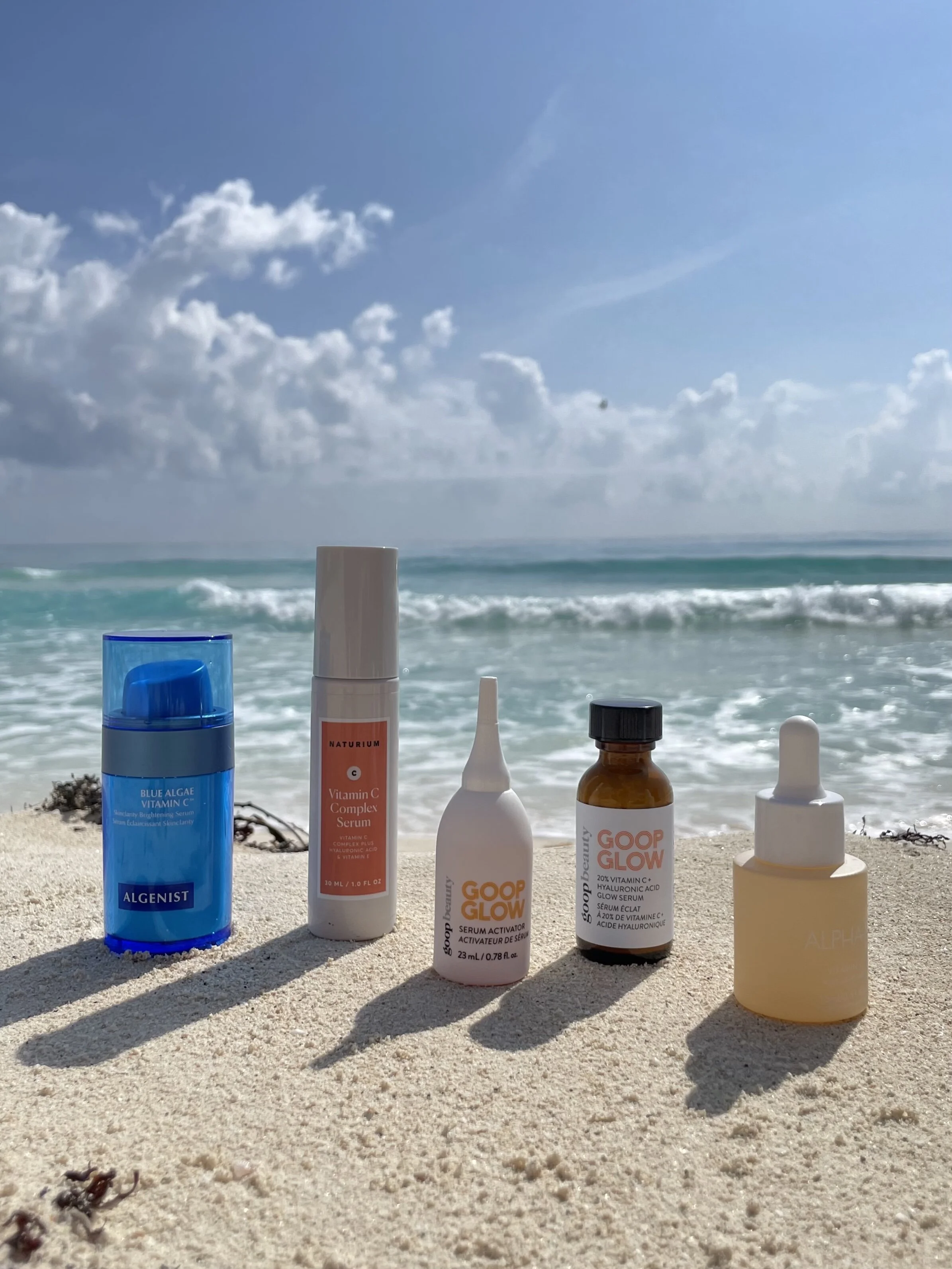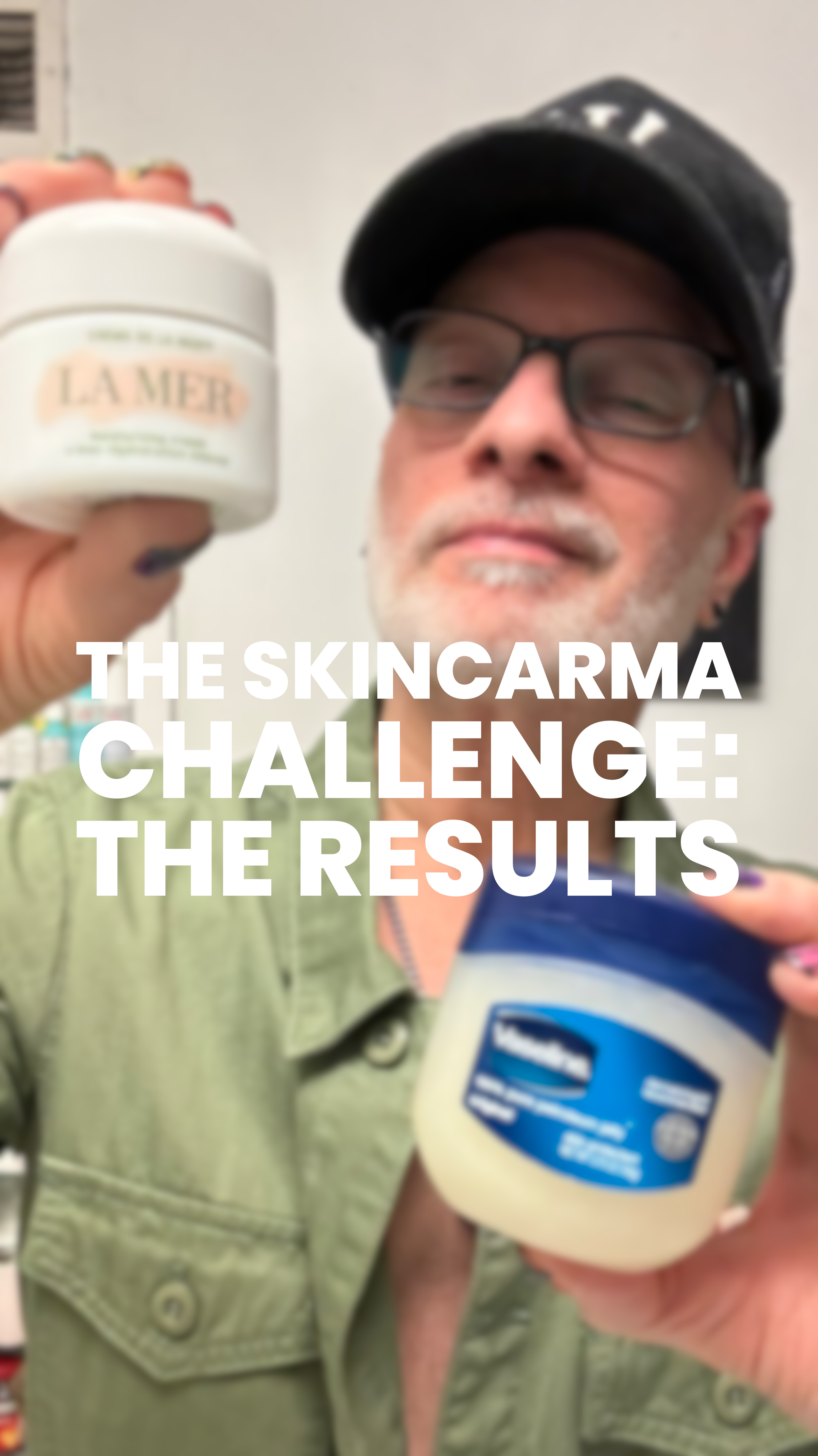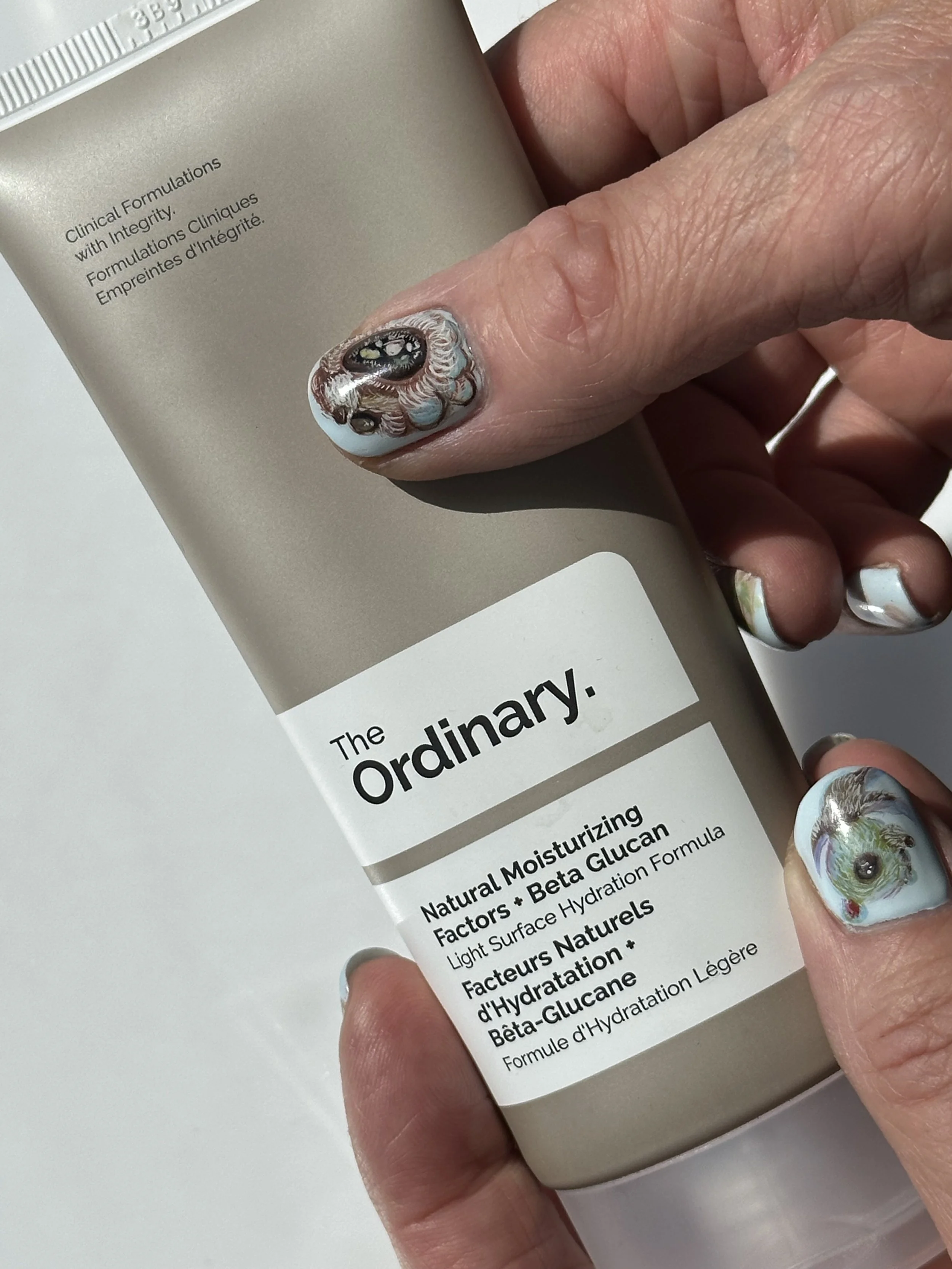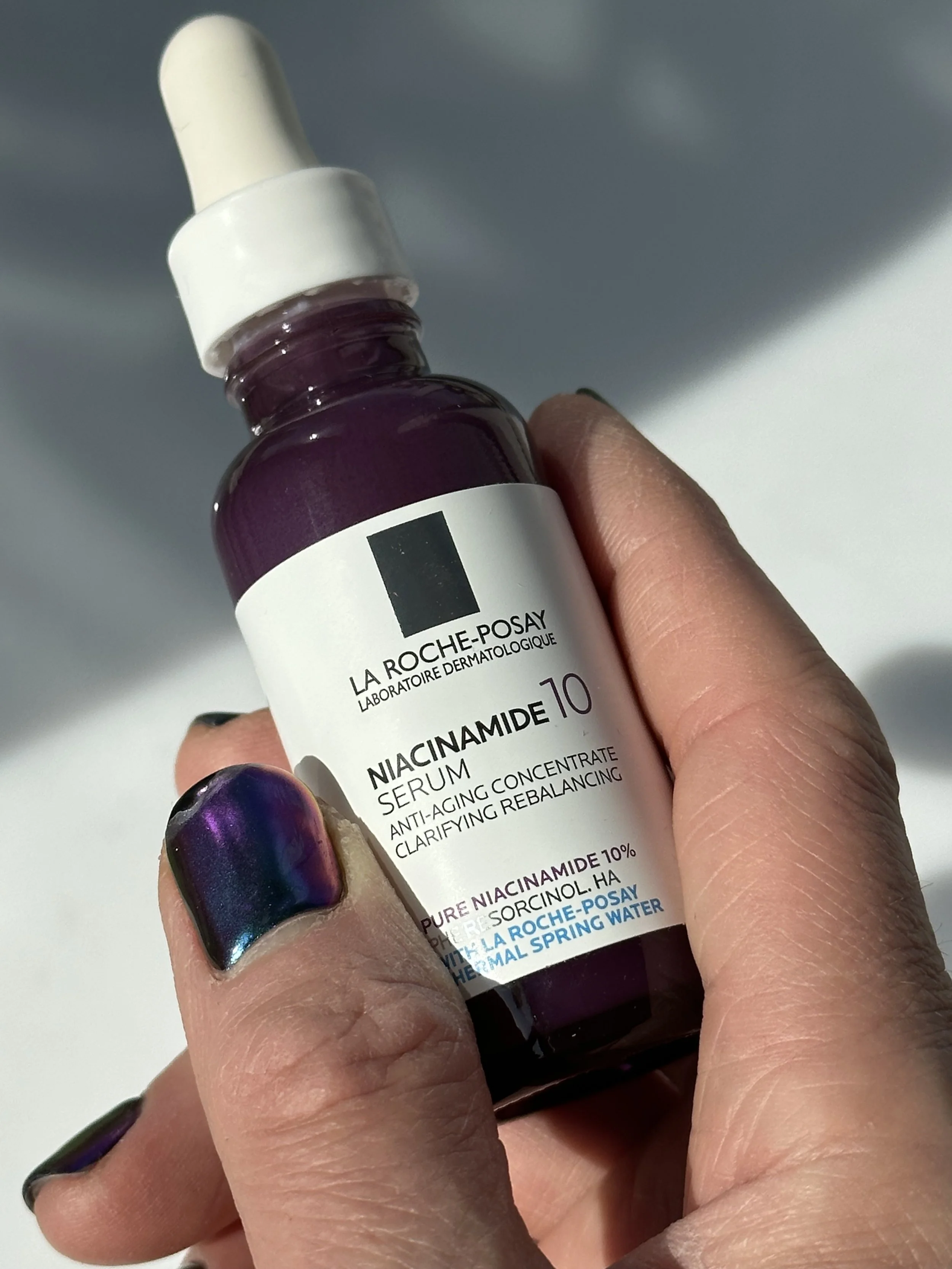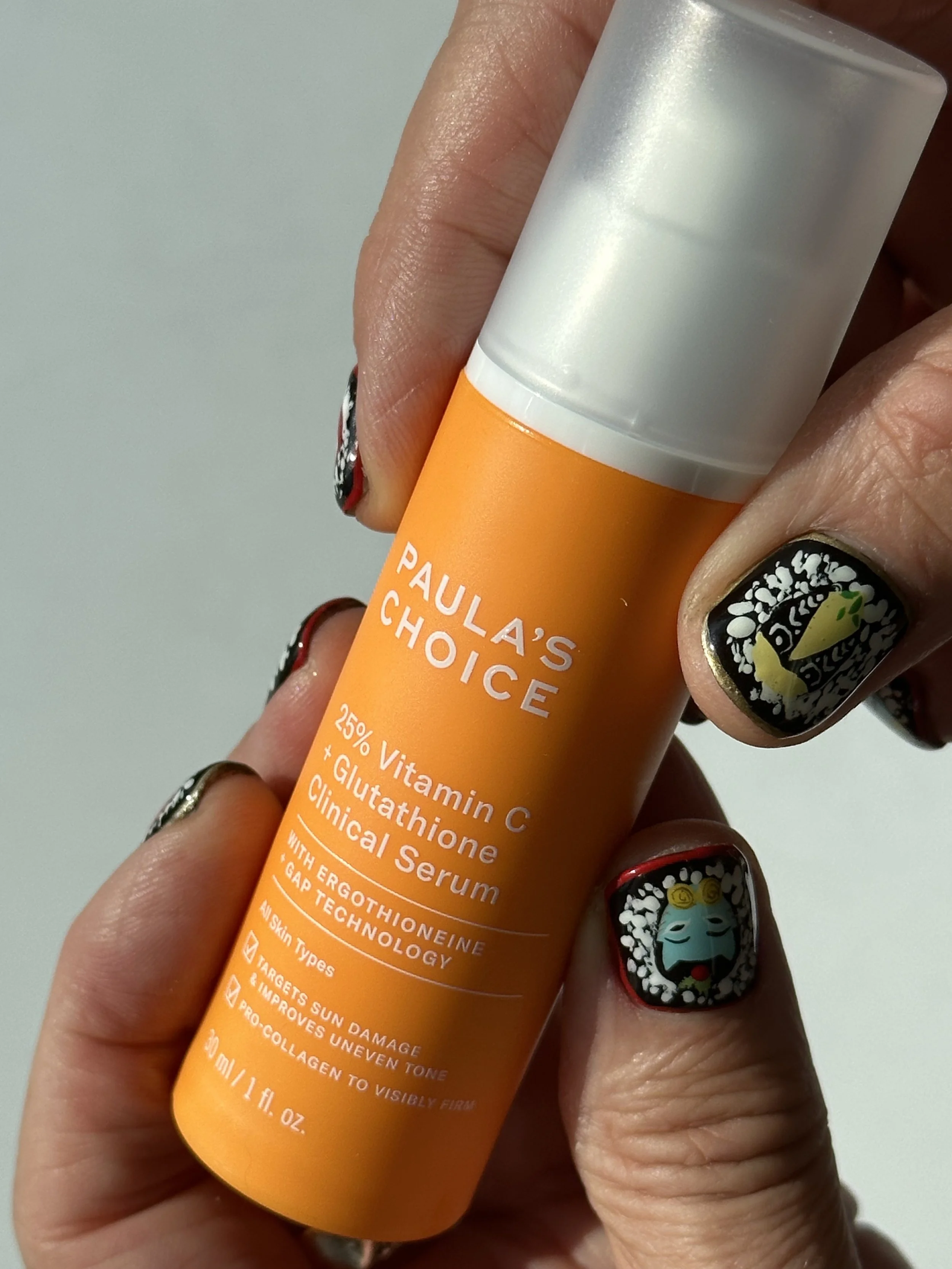PRODUCT REVIEW: LA ROCHE-POSAY 10% PURE VITAMIN C SERUM - What does vitamin c do for your skin? Should I use vitamin C on my face everyday? What not to mix with vitamin C?
LA ROCHE-POSAY 10% PURE VITAMIN C SERUM
Since the start of the year, I’ve made a point of exploring several “mass market” brands that I’ve only had a cursory awareness of until now – no actual experience with their products. Among these are two L’Oreal brands: La Roche-Posay and CeraVe.
But what is a mass market brand, anyway? Maybe “drugstore brand” is a better term. The marketplace for skincare is really blurred today and you could easily make the argument that The Ordinary and The INKEY List are mass.
Both The Ordinary and The INKEY List offer products at a fraction of the price of every comparable La Roche-Posay product. And the two brands even undercut most CeraVe products, too. The INKEY List recently introduced a new sunscreen, the $14.99 Polyglutamic Acid Dewy Sunscreen SPF 30. By comparison, the new CeraVe Hydrating Sheer Sunscreen SPF 30 for Face and Body is actually three dollars more! (Psst…I’ve recently featured both of these superb sunscreens on the blog; you can find the product reviews here.)
Over the past six weeks, I’ve explored several of La Roche-Posay’s most popular products. Among these have been the new UV Correct SPF 70 Daily Lotion Sunscreen and the La Roche-Posay Toleriane Double Repair Face Moisturizer. I’ll admit, I’m a fan of both.
Of course, La Roche-Posay has long been an industry leader in facial sunscreens, something I was made aware of in my years working in-house at another L’Oreal brand, Kiehl’s. As I shared in my La Roche-Posay Anthelios UV Correct SPF 70 Daily Lotion Sunscreen review here, we used their popular sunscreens as benchmarks when developing new Kiehl’s sunscreens so I know they’re high quality.
But, while I’ve been impressed with the brand’s sunscreens for face – both mineral and chemical – I haven’t had the same experience with La Roche-Posay’s range of face serums. The brand’s new 10% Pure Niacinamide Serum is one of the few Niacinamide face serums that I actually dislike. And I have to say the La Roche-Posay 10% Pure Vitamin C Serum isn’t exactly stellar, either. (More on that below.)
The Best Vitamin C Serums
As I’ve often shared, I consider both Niacinamide and Vitamin C to be essentials in my daily skincare routines. In fact, I use a dedicated Niacinamide serum and a Vitamin C face serum twice daily. I credit both – along with sunscreen and Retinol – for my overall skin health and the exceptional quality of my skin.
Just this past week someone remarked that I have no hyperpigmentation or dark spots. How is that even possible? My response was simple; the answer is quite obvious. Niacinamide and Vitamin C are unrivaled for fading and eliminating existing dark spots. And, of course, sunscreen is the only way to prevent them in the first place.
So if you’re wondering, What is the fastest way to fade dark spots? The answer is preventing them before they form with a daily sunscreen. And correction of existing hyperpigmentation should include a combination of a Vitamin C serum and a Niacinamide serum – at high concentrations of 10% or more.
That said, I know there is no quick fix for dark spots. I used to love to sunbathe, too, and certainly had my share of sun damage and visible signs of photoaging. But I’m living proof that a bright, clear, spot free complexion is possible. It takes time. And a lot of effort!
PRODUCT REVIEW: CERAVE SKIN RENEWING VITAMIN C SERUM
I began using a dedicated Vitamin C serum pretty regularly several years ago. Like many people, one of the first face serums with Vitamin C that I came across was the SkinCeuticals C E Ferulic – another L’Oreal brand. During my 7 years at Kiehl’s, I used to get my C E Ferulic at a significant discount in the L’Oreal company store.
The first to feature a high concentration of stabilized 15% Vitamin C, the iconic SkinCeuticals Vitamin C serum was introduced nearly 20 years ago – around 2005. And while the $182 serum remains one of the most popular skincare products on the market today, it’s actually a dated antioxidant Vitamin C serum – and hardly exceptional.
When it comes to formulating with Vitamin C, it’s no longer a hurdle to stabilize the notoriously unstable substance and there are now dozens of excellent antioxidant face serums with high levels of Vitamin C – at a fraction of the cost.
Equally effective at just $23 is The Ordinary Ethylated Ascorbic Acid 15% Solution. And The INKEY List’s 15% Vitamin C and EGF Brightening Serum is even more affordable at just about $20. You can get yourself nine of those for the cost of a single bottle of the SkinCeuticals C E Ferulic.
I’ve tried all of these Vitamin C serums and dozens more – several of them from notable L’Oreal brands.
In fact, I helped to develop the Kiehl’s Powerful-Strength Line-Reducing Concentrate Vitamin C Serum, named the product, and crafted the packaging copy. Recently upgraded from 10% Vitamin C to 12.5%, it remains one of my favorite products from the brand.
And recently, I put the CeraVe Skin Renewing Vitamin C Serum to the test. While it’s an effective brightening serum with Vitamin C – and a pleasure to use – it can wreak havoc on your skin. The formula is loaded with denatured alcohol, a problem for everyone’s skin, and particularly sensitive skin.
As I said in my review of it here, I wanted desperately to like it. The texture is amazing, the air-tight metal packaging is genius, and the high concentration of 10% Vitamin C is ideal for your skin each day. But using the product daily over a two-week period sensitized my skin.
The whole situation really perplexed me. Why would a brand like CeraVe, coveted for their products for sensitive skin, make one that’s so clearly irritating to your skin?
BEST VITAMIN C SERUM: NATURIUM VITAMIN C COMPLEX SERUM
I’m pretty sure the problem is the result of a disconnect between the brand’s marketers and the L’Oreal labs, responsible for making products for more than two dozen brands – many of them nearly identical formulas in different packaging.
So I wasn’t all that surprised by what I experienced when I began exploring La Roche-Posay’s new range of targeted face serums. Over the past year or so, the brand has introduced several new serums. Among them, La Roche-Posay’s 10% Pure Niacinamide Serum, the Retinol B3 Pure Retinol Serum and, yes, the La Roche-Posay 10% Pure Vitamin C Serum.
All of them are heavily scented with high concentrations of denatured alcohol; by my estimate, it’s around 5%. This is problematic in a single serum, let alone multiple serums intended for use throughout your skincare routine. I can’t imagine what it would do to my skin if I were to use even those three concurrently. And I wouldn’t want to find out!
Before I get to my La Roche-Posay 10% Pure Vitamin C Serum product review just below, I wanted to dive deeper into the benefits of Vitamin C for your skin and explore some of the most frequent concerns – like how often to use Vitamin C and what products to avoid when you do...
GET THE REAL TALK ON THIS VITAMIN C SERUM! 💯
1. What does vitamin C do for your skin?
Did you know that the human body cannot produce Vitamin C on its own? Despite the fact that we cannot survive without it – like water and air. One of the main benefits of Vitamin C for your overall health is as an antioxidant that helps the body fight off infection and disease.
Vitamin C is a potent antioxidant that can benefit your skin in multiple ways, too. According to a review article published in the Indian Dermatology Online Journal, vitamin C is important for the synthesis of collagen, a protein that provides structural support to the skin. Vitamin C also neutralizes free radicals, which can damage the skin and contribute to signs of skin aging.
In addition to its exceptional antioxidant protection and collagen-boosting properties, below are additional benefits of vitamin C for your skin:
Brightening: Vitamin C brightens the skin and helps reduce the appearance of hyperpigmentation, including dark spots, sun spots and age spots.
Photoaging: Vitamin C can help protect the skin from photoaging due to the damaging effects of UV radiation by neutralizing free radicals and reducing inflammation.
Hydration: Vitamin C can help improve the skin’s hydration levels, resulting in a smoother, plumper appearance.
It’s essential to note that the effectiveness of vitamin C in skincare products can depend on factors such as formulation, pH, and concentration of the active in the formula.
Sources: https://www.hindawi.com/journals/drp/2014/760741/; https://pubmed.ncbi.nlm.nih.gov/19218914/; https://www.ncbi.nlm.nih.gov/pmc/articles/PMC6204628/
2. Should I use vitamin C on my face everyday?
Yes! Using vitamin C on your face every day can be highly beneficial for your skin health, particularly when combined with other antioxidants and, of course, sunscreen.
However, the frequency of use may depend on factors such as your skin’s tolerance for high levels of actives, the concentration of vitamin C in the formula, and the other products you’re using in your routine.
It’s important to note that excessive use of vitamin C can cause irritation and sensitivity in some people. One of the best Vitamin C molecules for sensitive skin is Ascorbyl Glucoside – a stable form of vitamin C combined with the sugar, glucose. When absorbed by the skin, it breaks down to ascorbic acid, or pure vitamin C so you get the benefits of the pure form without the aggressiveness.
As with any powerful active, start by using a low concentration of vitamin C and gradually build up to daily use if your skin tolerates it well. It’s also a good idea to patch test new products before general use to gauge your skin’s reaction and tolerability.
Sources: https://www.healthline.com/health/vitamin-c-serum-benefits#daily-use
3. What not to mix with vitamin C?
There are some skincare ingredients that may not be compatible with vitamin C and could potentially reduce its effectiveness. Here are some ingredients to avoid mixing with vitamin C:
Retinol and other retinoids: Using vitamin C and retinol together has the potential to cause skin irritation and sensitivity. It’s best to alternate their use or use them at different times of the day – one in your AM routine, the other in your PM routine. As a rule, it’s smart to use Retinol at night to reap its benefits while avoiding sun sensitivity. Then use antioxidant Vitamin C in the morning as your skin is most exposed to free radical damage during the day.
Benzoyl peroxide: Benzoyl peroxide can oxidize vitamin C and make it less effective. It’s best to use these ingredients at different times of the day or alternate their use between different days.
AHAs and BHAs: Using vitamin C with exfoliants like alpha-hydroxy acids (AHAs) and beta-hydroxy acids (BHAs) can cause skin irritation and sensitivity. It’s best to use them at different times of the day or alternate their use between days.
It’s important to note that these recommendations may vary depending on the specific concentration and formulation of the products used. Only you know your skin and how it responds to various products.
Sources: https://www.healthline.com/health/skin/vitamin-c-retinol#how-to-use-them-together; https://www.healthline.com/health/vitamin-c-for-face#what-to-avoid; https://www.byrdie.com/vitamin-c-and-aha-346713;
4. Can I mix vitamin C with niacinamide?
Yes you can! Personally, I’ve long used both a Vitamin C serum and a Niacinamide serum in the same routine – and even twice daily. My skin is clearer and brighter than ever.
However, there is some debate among skincare professionals and chemists about whether it is a good idea to use vitamin C and niacinamide together. Some studies suggest that the two ingredients may cancel out each other’s benefits or cause skin irritation and redness. On the other hand, studies also suggest that using vitamin C and niacinamide together can have a synergistic effect, resulting in brighter, more even-toned skin.
There is a well-sourced, insightful article from the experts on the Paula’s Choice research team, titled Can You Use Niacinamide With Vitamin C? It dispels the notion that the two actives are incompatible.
Ultimately, the compatibility of vitamin C and niacinamide may depend on the specific concentration and formulation of the products used. It’s best to patch test new products before use and consult with a dermatologist or skincare professional if you have any concerns or questions.
You may also be interested in reading more about combining vitamin C and niacinamide in an article titled, Beauty Mythbusters: Can You Really Mix Niacinamide and Vitamin C for Your Best Skin Ever? You can catch it here.
Sources: https://www.futurederm.com/can-you-use-niacinamide-and-vitamin-c-ingredients-that-clash-part-i/; https://www.ncbi.nlm.nih.gov/pmc/articles/PMC3793238/
5. Product Review
La Roche-Posay 10% Pure Vitamin C Serum Review
I’ve been using the new La Roche-Posay 10% Pure Vitamin C Serum off and on for the past month or so – sometimes in the AM, sometimes in the PM, and occasionally on back-to-back days. And I know what you’re thinking, why haven’t you been using it consistently?
Well, I have to be honest here: I just don’t like it.
Much like my experience with the new La Roche-Posay 10% Pure Niacinamide Serum, this one has been a real mixed bag for me. I want to like it, I do. But there are just too many things about this Vitamin C serum that bug me.
It reminds me of so many budding relationships. You like the person, they’re cool, but there are a lot of hurdles to overcome. It’s just not worth the effort. La Roche-Posay’s 10% Pure Vitamin C Serum looks great on the outside, but once you get to know it, things aren't as good as they seem.
Where do I even begin? Say something nice, say something nice.
As I’ve shared, a dedicated Vitamin C serum is essential for your skin health. And a 10% concentration of Vitamin C is ideal for use daily – even twice daily, as I’m accustomed to doing. Formulated with 10% Ascorbic Acid, or pure Vitamin C, La Roche-Posay got that part right with their Vitamin C face serum.
I like lightweight water-based Vitamin C serums because they’re much easier to layer into the serum phase of my skincare routine – right after toning and before my moisturizer or sunscreen. You may know from past articles that I employ what I call the Skincarma ABC Method. It’s composed of three dedicated products: a Niacinamide face serum, a Vitamin C serum, and a Retinol serum or face cream with Retinol. ABC. Or more accurately, BCA!
And again here, La Roche-Posay got it right. The texture of their 10% Pure Vitamin C Serum is perfect. Light and silky, it absorbs almost instantly into your skin.
But this is where the good ends and the bad begins.
PRODUCT REVIEW: PAULA’S CHOICE C5 SUPER BOOST MOISTURIZER
Like CeraVe’s Skin Renewing Vitamin C Serum, the La Roche-Posay 10% Pure Vitamin C Serum is a nightmare for sensitive skin. And, if you don’t have sensitive skin at the start, you just may when you’re done with it.
Unbelievably, the formula is loaded with sensitizing ingredients. First is a high level of denatured alcohol, which can dry out your skin, damage skin cells, weaken your skin barrier, and sensitize your skin along the way. At ingredient number five, I’d estimate that it’s got a concentration of between 3-5%. Ugh.
If you’re wondering why alcohol is bad for your skin or why does alcohol make skin worse you may want to browse this article from the Paula’s Choice research team titled, Alcohol in Skin Care: The Facts.
Why is it in there then? Well, the L’Oreal chemists like to use denatured alcohol across the brand’s formulas because it enhances penetration of actives for better results. It’s a philosophy of “tear it down to build it up.” Oddly, at a 10% concentration the Vitamin C doesn’t need any enhancement to deliver its best benefits for your skin. It’s just dumb.
Next is the fragrance. While Parfum/Fragrance is listed as the last ingredient in the INCI, the scent is still overwhelming. It can best be described as a fruity floral. If you like fruity floral perfumes like the Chanel Chance Eau Tendre or Gucci Flora Gorgeous Gardenia Eau de Parfum, then this is for you. Oh wait. It’s not a perfume, it’s a Vitamin C serum. Again, ugh.
Next on the list of “why is this ingredient in here?” is Salicylic Acid. This one stumps me. Why would you put exfoliating Salicylic Acid in a Vitamin C serum? In all my years in skincare, and after testing out what has to be 100+ brightening face serums with Vitamin C, I’ve never come across this. To their credit, it’s not at a high level, but it’s just nonsensical.
Straight from the brand’s product messaging: “This serum combines concentrated 10% pure vitamin c, salicylic acid and neurosensine for optimal effectiveness while also being suitable for sensitive skin.” In the words of Frau Farbissina, “Lies, all lies!”
The last fatal flaw for me is the glass bottle. Back to my analogy of the hot dates. Looks really good from the outside. And, like dating someone, we all love as much transparency as possible. But in the case of Vitamin C, transparency is highly problematic.
I have 100% confidence that the L’Oreal chemists formulating products for La Roche-Posay know that Vitamin C is sensitive to light. When exposed to light, the active breaks down over time and becomes, well, inactive.
But it’s so pretty on the shelf…
6. Pros & Cons
What I like about it: The La Roche-Posay 10% Pure Vitamin C Serum has a high 10% concentration of Vitamin C and a highly pleasurable texture. That’s everything I like about it.
What I don’t like about it: The denatured alcohol is very problematic and particularly for sensitive skin. And to add insult to injury, the fragrance and Salicylic Acid have the potential to sensitize even normal, balanced skin (like mine!). At $44, it’s one of the worst Vitamin C serums for the price – or any price for that matter!
Who it’s for: All skin types, but sensitive skin types should run as fast as they can.
SHOP THE BLOG: Still want to try it for yourself? Purchase the La Roche-Posay 10% Pure Vitamin C Serum for $44.99 here.
The Ingredient List of the La Roche-Posay 10% Pure Vitamin C Serum:
 aox|sb|buff, Cyclohexasiloxane emo|solv, Glycerin
aox|sb|buff, Cyclohexasiloxane emo|solv, Glycerin  sii|h 0 0, Alcohol Denat
sii|h 0 0, Alcohol Denat  amic|solv|vc, Potassium Hydroxide buff, Polymethylsilsesquioxane, Polysilicone-11, Dimethicone emo 0 1, Propylene Glycol h|solv|vc 0 0, Pentaerythrityl Tetraethylhexanoate emo|vc, C13-14 Isoparaffin emo|vc|solv, PEG-20 Methyl Glucose Sesquistearate emu, Sodium Hyaluronate
amic|solv|vc, Potassium Hydroxide buff, Polymethylsilsesquioxane, Polysilicone-11, Dimethicone emo 0 1, Propylene Glycol h|solv|vc 0 0, Pentaerythrityl Tetraethylhexanoate emo|vc, C13-14 Isoparaffin emo|vc|solv, PEG-20 Methyl Glucose Sesquistearate emu, Sodium Hyaluronate  sii|h 0 0, Adenosine
sii|h 0 0, Adenosine  cci, Poloxamer 338 emu|surf, Ammonium Polyacryloyldimethyl Taurate vc, Disodium EDTA chel, Hydrolyzed Hyaluronic Acid
cci, Poloxamer 338 emu|surf, Ammonium Polyacryloyldimethyl Taurate vc, Disodium EDTA chel, Hydrolyzed Hyaluronic Acid  h, Caprylyl Glycol h|emo, Laureth-7 emu|surf, Acetyl Dipeptide-1 Cetyl Ester
h, Caprylyl Glycol h|emo, Laureth-7 emu|surf, Acetyl Dipeptide-1 Cetyl Ester  cci|so, Xanthan Gum vc, Toluene Sulfonic Acid surf, Polyacrylamide vc, Tocopherol
cci|so, Xanthan Gum vc, Toluene Sulfonic Acid surf, Polyacrylamide vc, Tocopherol  aox 0-3 0-3, Salicylic Acid
aox 0-3 0-3, Salicylic Acid  exf|aacne|so|pres, Parfum/Fragrance
exf|aacne|so|pres, Parfum/Fragrance  perf
perfIS IT REALLY A SCAM?
Find out on my TikTok channel.
MY TOP VITAMIN C PICKS FW21: NEW VITAMIN C SERUMS I’M CRUSHING ON FROM ALGENIST, NATURIUM AND MORE
WATCH MY VIDEO REVIEW
THE BEST NIACINAMIDE SERUMS FOR CLOGGED PORES AND A BRIGHTER COMPLEXION
ON MY YOUTUBE CHANNEL HERE
WATCH MY VIDEO REVIEW OF
SKINCARE HACKS: GLYCOLIC ACID IS THE NATURAL DEODORANT THAT WORKS!
ON MY YOUTUBE CHANNEL HERE
WATCH MY VIDEO REVIEW OF
MY FAVORITE HUMECTANT SERUMS FROM PAULA'S CHOICE, THE INKEY LIST, GHOST DEMOCRACY AND MORE
ON MY YOUTUBE CHANNEL HERE
WATCH MY VIDEO REVIEW
COOL CLEAN FACIAL SUNSCREENS TO KEEP US SAFE AND SMILING IN THE SUN!
ON MY YOUTUBE CHANNEL HERE
WATCH MY VIDEO REVIEW
THE OPULUS BEAUTY LABS RETINOL SYSTEM – THE COOLEST RETINOL INNOVATION I’VE EVER SEEN
ON MY YOUTUBE CHANNEL HERE
WATCH MY VIDEO REVIEW
MY 2021 VITAMIN C PICKS + THE BEST VITAMIN C SERUMS TO BRIGHTEN UP THE COMPLEXION!
ON MY YOUTUBE CHANNEL HERE
WATCH MY VIDEO REVIEW OF
MY WINTER SKIN SAVIOR: SKINFIX BARRIER+ LIPID REPLENISHING SKINCARE
ON MY YOUTUBE CHANNEL HERE
WATCH MY VIDEO REVIEW
A COMPLETE K-BEAUTY ROUTINE WITH THE BEST FACIAL SKINCARE FROM PURITO, COSRX, MISSHA & MORE!
ON MY YOUTUBE CHANNEL HERE
WATCH MY VIDEO REVIEW
THE YEAR’S BEST VITAMIN C SERUMS WITH PAULA'S CHOICE, SUNDAY RILEY, THE INKEY LIST AND MORE!
ON MY YOUTUBE CHANNEL HERE
WATCH MY VIDEO REVIEW OF
A SELFCARE SUNDAY NOT FOR THE FAINT OF HEART – WITH THE PAULA’S CHOICE 25% AHA PEEL!
ON MY YOUTUBE CHANNEL HERE


